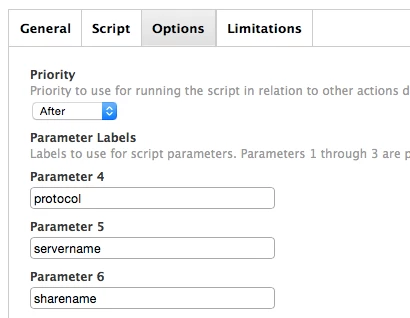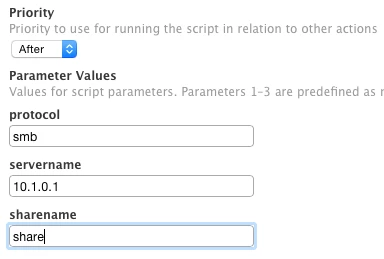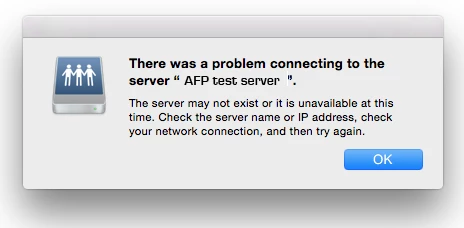Assuming you're editing the same config profile on the server that's certainly what should happen.
From what over seen, mounting shares from config profiles hasn't been very reliable and we've had to do some remedial work after changing server or share names.
It's the same with Apple's Profile Manager.
We stick to login scripts for now until this gets a bit more stable.
is there a login script on jamf somewhere that you followed?
Hi, this is a cut down version of the script we use sometimes:
#!/bin/bash
username="$3"
if [ -z "$username" ]; then # Checks if the variable is empty (user running script from Self Service)
username="$USER"
fi
echo "User: $username"
protocol="$4" # This is the protocol to connect with (afp | smb)
echo "Protocol: $4"
serverName="$5" # This is the address of the server, e.g. my.fileserver.com
echo "Server: $5"
shareName="$6" # This is the name of the share to mount
echo "Sharename: $6"
# Mount the drive
mount_script=`/usr/bin/osascript > /dev/null << EOT
tell application "Finder"
activate
mount volume "$protocol://${serverName}/${shareName}"
end tell
EOT`
exit 0
You add the script and set the parameter labels as:

Once thats in place you can re-use the script in a policy, setting the relevant options:

Hope this helps.
@KCH080208 Here's my version. Which isn't dissimilar to what @davidacland poated.
Hello everyone, despite the not so encouraging comments and suggested alternative routes, I am testing config profiles to manage network volumes with a "login items" payload.
I can limit the profile (applied at user level) to a specific Active Directory usergroup and its network volumes.
This all seems to work fine, except when the computer if off network (e.g.: laptop)
When there's no network available, being the profile still there, an error message appears in the Finder, as the server is obviously not reachable

Would you think there's a workaround for this?
Many thanks for your help!
Ciao
Carlo
I don't think the config profile approach is that flexible unfortunately. It just adds the share to the login items and doesn't do any checking whether the Mac is on or off the network.
A scripted approach with a policy would let you restrict it to network segments to avoid the error.
@davidacland tried running the script to mount our network share using the login trigger in the policy, but can't get it to work as it seems to attempt to mount the share before the Finder has loaded properly. What trigger do you use to run the policy?
If its a school setup we normally use the login trigger. In some other cases we've used Self Service instead.
Are you running anything else at login?
We do enable "Perform login hook actions in background" in the computer management > check-in settings (just in case thats causing the issue).
@davidacland Thanks! Enabling "Perform login hook actions in background" did the trick!



